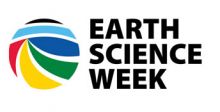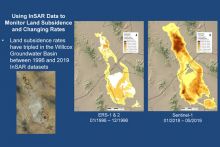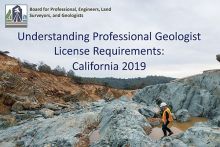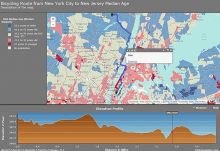This webinar provides an overview of earthquake risk in the U.S. and explores the importance of coordinated post-earthquake response and the effectiveness of post-earthquake technical clearinghouses in improving earthquake resiliency.
Background:
Since 2000, there have been 51 significant earthquakes that have caused over $3.4 billion dollars in damages and 31 deaths in the United States.1 While large earthquakes pose a substantial threat along the West Coast and in Alaska, they also can affect the Central and Eastern United States, as they did during the 1811 and 1812 New Madrid earthquakes and 1886 Charleston, SC earthquake. Earthquakes can have wide ranging impacts, such as the 5.8 magnitude earthquake in Mineral, VA that happened in 2011 and was felt across multiple states along the East Coast, causing $200-$300 million in damages and this year’s 7.1 magnitude earthquake near Ridgecrest, CA that was felt in Nevada and Arizona, and cased $100 million in damages.1,2,3 A single event can be devastating: for example, the 1994 Northridge, CA, 6.7 magnitude earthquake caused at least $40 billion in direct damage and killed around sixty people.3
As population continues to expand into risk-prone areas, improved risk management practices are increasingly necessary to improve emergency preparedness and response by providing information on earthquake processes, assessing the adequacy of built infrastructure and building codes, and providing insight on how to improve future recovery and urban development efforts. Post-earthquake technical clearinghouses are a successful strategy for tracking the collection of information about ground failures, structural damage, and other impacts from major earthquakes, reducing duplication of effort in data collection, and disseminating information about events to emergency response managers. In this webinar, our speakers discuss earthquake risk in the U.S., the importance of coordinated post-earthquake response, and the effectiveness of post-earthquake technical clearinghouses in improving earthquake resiliency.
Our speakers are:
- Matthew Wall, Executive Director, Western States Seismic Policy Council |
 Slides |
Slides |  Video
Video - Maggie Ortiz-Milan, Program Manager, Earthquake Engineering Research Institute |
 Slides |
Slides |  Video
Video - Cynthia Pridmore, Engineering Geologist, Seismic Hazard Program, California Geological Survey; Chair, California Earthquake Clearinghouse |
 Slides |
Slides |  Video
Video
Additional Resources:
 View this webinar's Question & Answer session
View this webinar's Question & Answer session View a list of additional questions and answers from this webinar
View a list of additional questions and answers from this webinar- U.S. Geological Survey, Circular 1242, The Plan to Coordinate NEHRP Post-Earthquake Investigations
- Nevada Bureau of Mines and Geology Special Publication 36, The 21 February 2008 MW 6.0 Wells, Nevada, Earthquake, Section IIV. Response to the Earthquake, Community Impacts, and Disaster Recovery
- EERI Earthquake Clearinghouse website: http://www.learningfromearthquakes.org/activities/clearinghouses
- California Earthquake Clearinghouse: www.californiaeqclearinghouse.org
References
1 M5.8 August 23, 2011 Mineral, Virginia, U.S. Geological Survey Earthquake Hazards Program. https://www.usgs.gov/natural-hazards/earthquake-hazards/science/m58-august-23-2011-mineral-virginia
2 M 7.1 - 2019 Ridgecrest Earthquake Sequence, U.S. Geological Survey Earthquake Hazards Program. https://earthquake.usgs.gov/earthquakes/eventpage/ci38457511/executive
3 National Geophysical Data Center / World Data Service (NGDC/WDS): Significant Earthquake Database. National Geophysical Data Center, NOAA. doi: 10.7289/V5TD9V7K
CEU Credits
To earn CEU credits, please complete the associated on-demand GOLI course that was developed from this webinar with a grade of 70% or higher and then submit your application for CEUs. CEUs are awarded from the American Institute of Professional Geologists. To view the full list of on-demand GOLI courses, please browse the GOLI course catalog.
Media Partners
Thank you to our media partners:
- American Association of Geographers
- American Geophysical Union
- American Institute of Professional Geologists
- Association of Environmental & Engineering Geologists
- Central United States Earthquake Consortium
- Geological Society of America
- Incorporated Research Institutions for Seismology
- National Science Foundation - Directorate for Geosciences
- Northeast States Emergency Consortium
- Western States Seismic Policy Council





